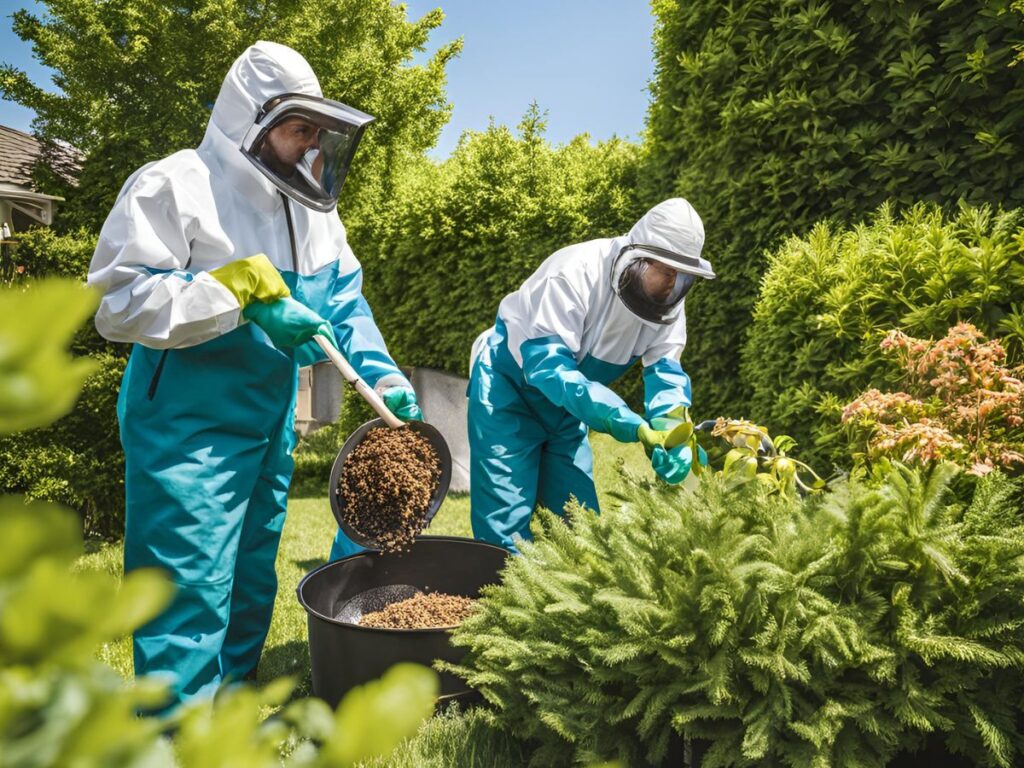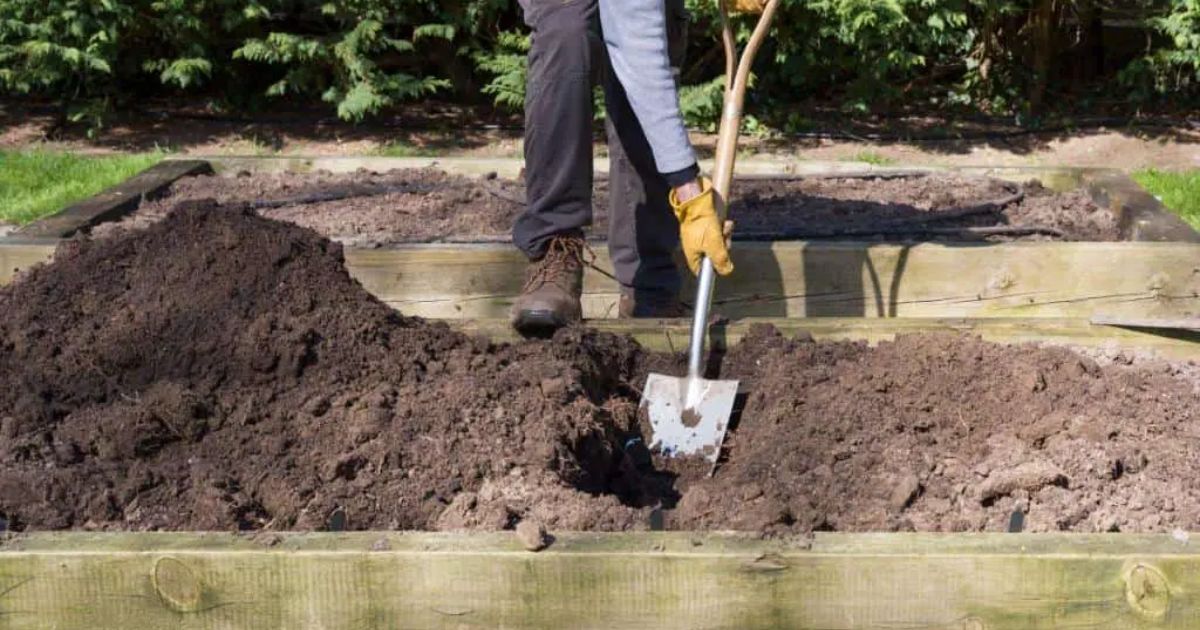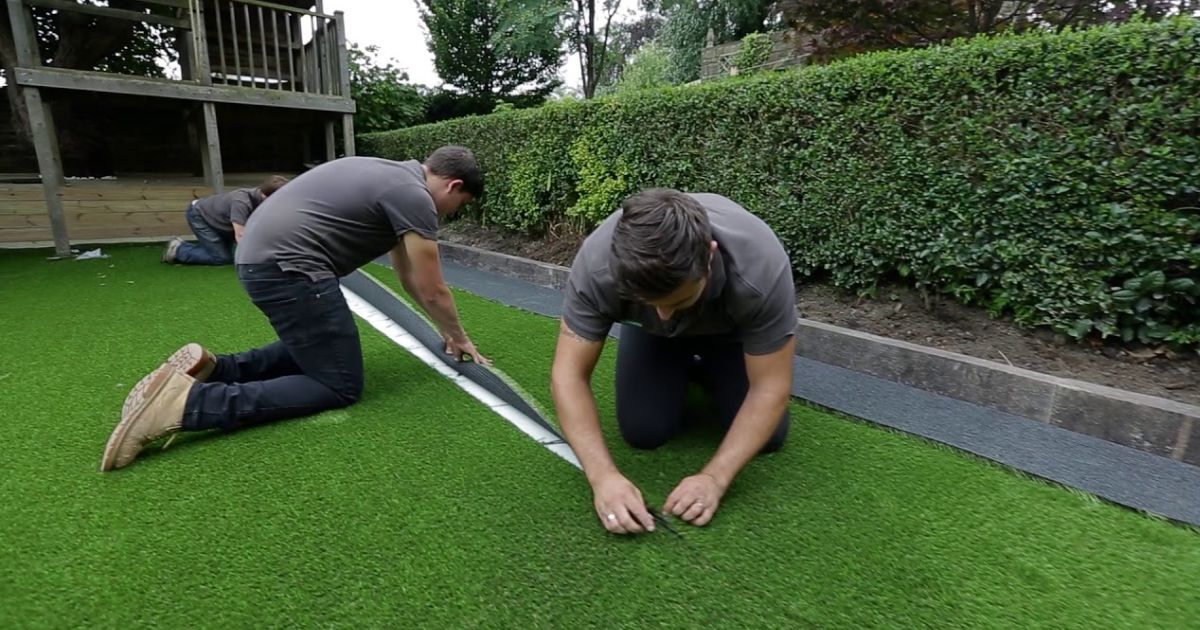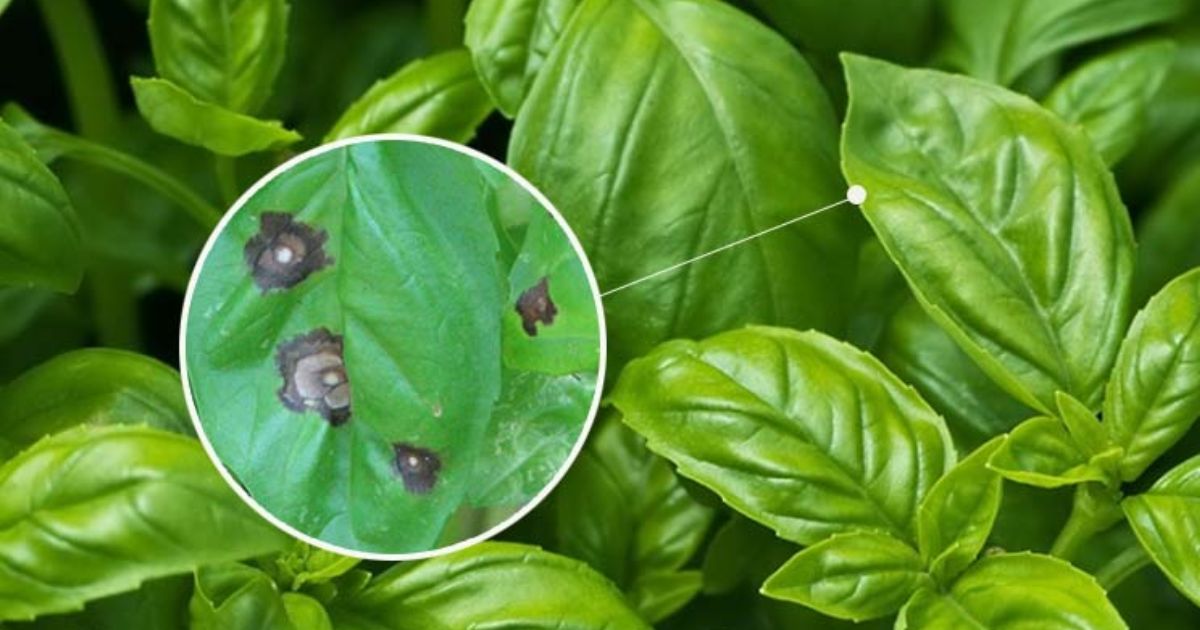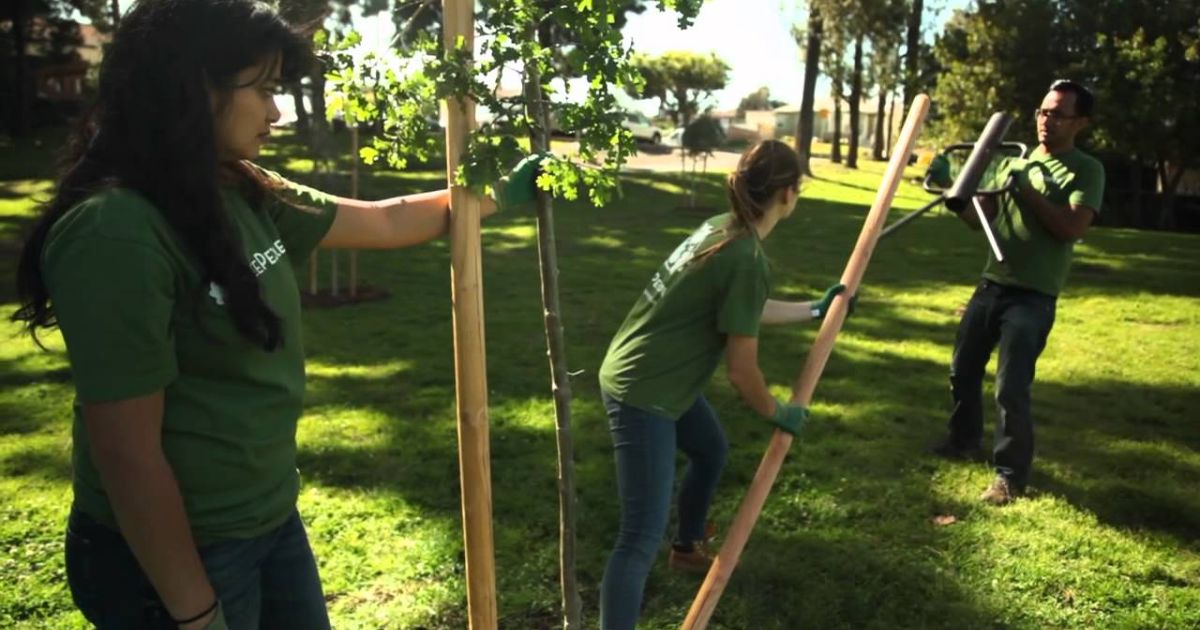Wasps can be a nuisance, especially when they build their nests in or around your home and garden. Not only do they threaten your safety, but their presence can also disrupt outdoor activities and damage your property. If you’ve ever found yourself swatting at a wasp or wondering how to eliminate wasps in your home and garden, you’re not alone. Wasps can be aggressive, particularly if they feel threatened, and some people may get severe allergic reactions as a result of their stings.
This comprehensive guide will walk you through the best methods to eliminate wasp traps in your home and garden. From identifying nests to taking preventive measures and using safe, effective removal techniques, we’ll provide the tools and tips to keep your space wasp-free. Whether you’re dealing with a small nest in the corner of your yard or a large infestation in your attic, you’ll find practical solutions to safely eliminate wasps and prevent future problems.
Why You Should Get Rid of Wasps in Your Home and Garden
Wasps might seem like a minor annoyance, but the dangers they could pose to your security and your property make it essential to promptly address any infestations. Here are some of the top reasons why you should get rid of wasps in your home and garden:
Safety Concerns: Wasp stings can be more than just painful—they can lead to serious health risks. A single sting might cause allergic reactions in certain people an anaphylactic reaction, which can be life-threatening without immediate medical attention. Those without known allergies can suffer from swelling, pain, and discomfort. The risk increases if you have children or pets, as they are more likely to encounter wasp traps in the garden or home. The fear of stings can also create a stressful environment for family members, mainly when wasps build nests in areas like the yard or attic.
Damage to Property: Wasps are not just a threat to your health—how do you get rid of wasps outside they can cause significant damage to your property. Nests built inside walls, roofs, or attics can lead to structural issues. The constant chewing and burrowing needed to make these nests can weaken the integrity of your home’s materials over time. In some cases, wasps may even infiltrate wiring, insulation, or vents, creating costly repairs down the line. If left untreated, a wasp infestation can quickly escalate from a simple annoyance to a serious and expensive issue. is a banana a herb
Annoyance and Inconvenience: Wasps can significantly disrupt your daily life, especially if you enjoy spending time in your garden or hosting outdoor gatherings. The presence of wasps can make it difficult to relax outside, as their aggressive behavior is often triggered by movement or sudden actions. Gardening, barbecuing, or even just enjoying a peaceful afternoon in the yard becomes a hassle when you have to constantly be on the lookout for these flying pests. A wasp-free environment allows you to enjoy outdoor spaces without the stress or fear of being stung.
Health Risks: Beyond the immediate pain of stings, wasps can also pose longer-term health risks. Stings can lead to infections if not properly treated, especially if a person accidentally scratches or irritates the sting site. Additionally, the areas where wasps build their nests may contain germs and bacteria, endangering your home’s cleanliness. Moreover, wasp nests in your home or garden may attract different pests, potentially spreading diseases or introducing additional health hazards to your living space.
For these reasons, it’s crucial to take action as soon as you notice signs of wasp activity in your home or garden. This will protect your family and property and restore peace of mind so you can enjoy your outdoor space without fear.
Identifying Wasp Nests in Your Home and Garden
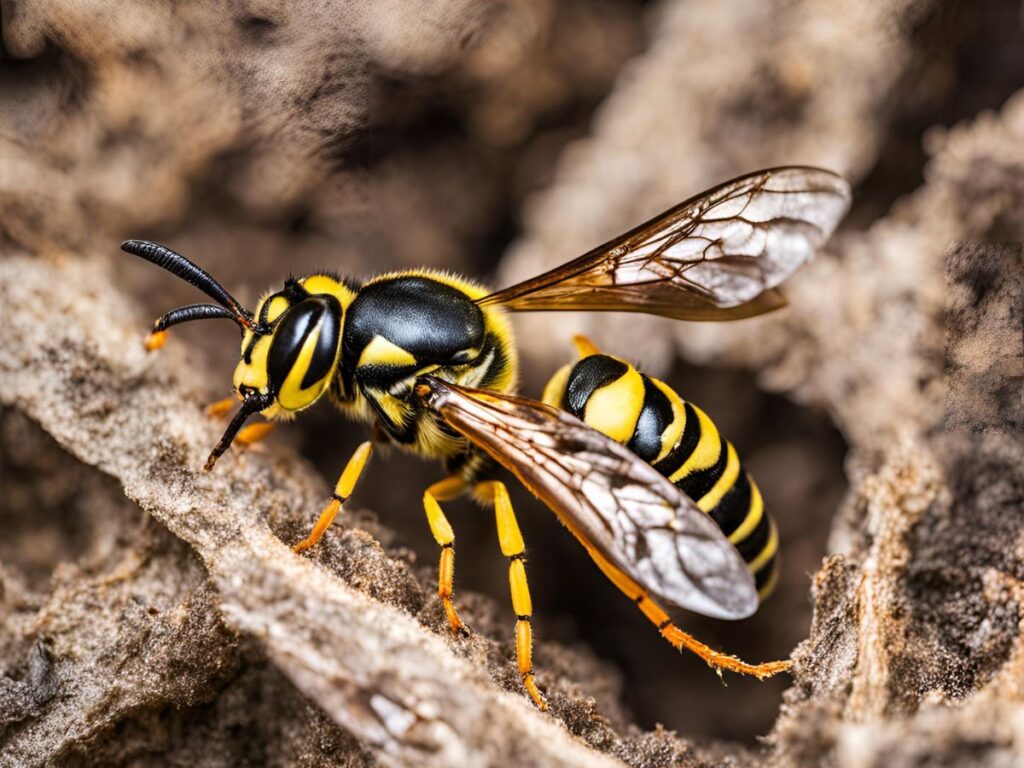
Identifying wasp nests in your home and garden is crucial for quickly preventing an infestation. Common signs of wasp activity include increased wasps around your property, buzzing noises emanating from hidden areas, and visible nests. You might notice wasps flying in and out of a particular spot, often near food sources or sheltered areas. Nests can typically be found in attics, walls, and eaves within your home, or in trees, sheds, and even underground in your garden. Wasps such as yellowjackets, paper wasps, and hornets each have different nesting habits—yellowjackets often nest underground or in wall cavities, paper wasps build smaller, umbrella-shaped nests under eaves or tree branches, and hornets create larger, more conspicuous nests in trees or on high buildings. Recognizing these signs and knowing where to look can help address a wasp problem before it becomes dangerous.
How to Get Rid of Wasps in Your Garden
Dealing with wasps in your garden can be challenging, but several effective strategies exist to eliminate them and prevent future infestations. By taking preventive measures, using DIY solutions, how to prevent wasps from building a nest and knowing when to call in professional help, you can keep your garden safe from wasp problems.
Preventive Measures:
- Remove Food Sources: Wasps are attracted to sugary foods and drinks and decomposing organic matter. Cover trash cans, compost bins, and any leftover food in your garden to keep them at bay. If you enjoy outdoor meals or barbecues, clean up promptly and keep sugary drinks and fruit covered to avoid attracting wasps.
- Trim Trees and Shrubs: Overgrown trees and shrubs offer shelter and hiding places for wasp nests. Regularly trimming your garden’s greenery can reduce the areas where wasps might build their nests, particularly near the ground or under branches.
- Plant Wasp-Repelling Plants: Certain plants, like eucalyptus, citronella, and wormwood, are natural repellents for wasps. Planting these thoughtfully across your garden will allow you to assist keep wasps from nesting close by making the area less appealing to them.
DIY Solutions for Getting Rid of Wasps:
- Homemade Wasp Trap: One of the simplest ways to attract and trap wasps is to use a homemade trap. Fill a jar or bottle with sugary substances like sugar water, fruit juice, or beer and hang it near the affected area. Wasps will be drawn to the sweetness and become trapped inside, reducing the number of wasps in your garden.
- Vinegar Solution: Wasps are repelled by the scent of vinegar, making it a valuable tool for deterring them. In a spray bottle, combine equal parts Apply the vinegar and water mixture straight on the wasp nests or areas where you’ve seen wasp activity. This will encourage the wasps to leave without harming them.
- Peppermint Oil Spray: Wasps dislike the strong smell of peppermint oil, and using it as a spray can deter them from building nests. Mix a few teaspoons Use a spray bottle to combine peppermint oil and water, then apply the mixture to places where you’ve seen wasps or potential nesting sites. The strong scent will drive them away without the use of harmful chemicals. catfacing on tomatoes
When to Use Professional Help:
Although do-it-yourself techniques can work well for tiny nests or isolated wasp problems, sometimes professional help is necessary. If you discover a large nest, especially in hard-to-reach places like your roof, attic, or underground, how to exterminate wasps it’s safest to call a pest control expert. Large colonies can become aggressive, putting you and your family at risk of stings. Additionally, wasps may become more territorial as their nests grow, making DIY methods less effective. A professional exterminator has the experience, tools, and protective equipment to safely remove wasps and nests from difficult locations.
How do i get rid of wasps By using these preventive measures and solutions, you can significantly reduce the presence of wasps in your garden. However, always prioritize safety and seek expert assistance to ensure a wasp-free environment.
How to Get Rid of Wasps in Your Home
If you have a wasp nest in your home, it’s essential to address it quickly to ensure the safety and comfort of your family. While dealing with wasps indoors can be more dangerous than outdoor nests, there are effective ways to handle the situation, whether removing the nest yourself or calling in a professional. Here’s how to get rid of wasps inside your home.
Dealing with Indoor Nests:
The first step is identifying the location of the nest. Wasps typically build nests in hidden areas, such as attics, wall cavities, basements, or even inside your home’s insulation. To locate the nest, look for signs of wasp activity, such as increased buzzing noises, wasps flying in and out of a specific area, or visible damage to walls or ceilings. If you hear buzzing noises but can’t find the nest, how to find a wasp nest you might need to carefully inspect your attic or wall spaces or hire a professional to perform a thorough search.
Safety Precautions:
When dealing with wasps indoors, safety is crucial. Wasps can become aggressive, especially if they feel threatened, so taking precautions is essential before attempting to remove a nest. Wear protective gear at all times, such as gloves, long sleeves, pants, and a face shield shield or beekeeper’s mask, to minimize the risk of stings. Ensure the area is well-ventilated and that windows or doors are open to provide an escape route for any wasps that might get startled during the process. Keeping children and pets out of the area is also recommended until the nest is safely removed.
DIY Methods to Remove Indoor Nests:
- Wasp Sprays: Commercial wasp sprays are widely available and effective for eliminating wasps and their nests. These sprays usually have a long reach, allowing you to apply them directly to the nest from a safe distance. If you prefer a natural approach, make a homemade wasp spray by mixing peppermint oil with water and a small dish soap. Spray the solution directly on the nest and wasps, as the peppermint oil repels them and the soap helps suffocate them.
- Remove Nests at Night: Wasps are less active at night, making it the best time to remove a nest. Wait until dark, when the wasps are likely to be inside the nest, and carefully remove the nest using a long tool or gently cut it from the structure. Be cautious, as even a minor disturbance can provoke the wasps.
Sealing Entry Points:
After removing the nest, it’s critical to close off any openings to avoid infestations in the future. Examine windows, doors, vents, and pipes for any openings or crevices where wasps might enter. Use caulking or expanding foam to seal any openings. Install screens on vents, windows, and chimneys to keep wasps from entering your home through these areas. Regularly inspect these entry points and repair any new gaps that may appear over time to ensure your home remains wasp-free.
By taking the proper precautions, using effective methods, and sealing potential entryways, you can successfully eliminate wasps in your home and prevent them from returning. However, how to deter wasps from nesting suppose the nest is large and challenging to reach, or the infestation is beyond your control. In that case, For the safe removal of the bug, it is best to get in touch with a professional pest control agency nest and prevent further issues.
Safety Tips for Handling Wasps
Dealing with wasps can be dangerous, especially when removing a nest or reducing their presence near your home. It’s crucial to take the right safety measures to prevent provoking the wasps, protect yourself, and know how to handle stings if they occur.
Avoid Provoking Wasps:
The key to staying safe when near wasps is to keep your cool and refrain from making abrupt gestures. Wasps are naturally defensive and can become aggressive if they feel threatened. Quick or erratic actions, such as swatting at them or making loud noises, can provoke a wasp attack. If you encounter a wasp, try to remain still and slowly walk away from the area. Avoid bright clothing and strong scents like perfumes, which can attract wasps. If you’re working near a nest, be mindful of your surroundings and exercise additional caution to stay away from disturbing the wasps.
Protective Clothing:
When handling wasps or dealing with their nests, protective clothing is essential. Wear long sleeves, long pants, gloves, and closed-toe shoes to protect as much skin as possible from potential stings. A beekeeper’s veil or a face shield is also recommended when working near wasps, as they target the face and eyes. Thick clothing will help reduce the chance of stings and provide an added layer of defense. Consider wearing protective gear before removing the nest if a wasp infestation is near your home.
How to Handle Stings:
Even with precautions, you may still be stung by a wasp. how to get rid of a wasp Acting quickly to reduce pain and prevent complications is essential if this happens. Follow these steps:
- Remove the Stinger: Wasps don’t leave stingers behind, so you won’t need to scrape anything out, but if the sting area becomes swollen or itchy, it’s important to clean the area and remove any remnants of the sting with a gentle wash.
- Apply Ice: Use an ice pack to lessen pain and swelling or a cold compress to the sting area. This helps numb the area and constrict the blood vessels, reducing inflammation.
- Seek Medical Help for Allergic Reactions: While most wasp stings cause minor discomfort, some individuals may have allergic reactions that can be life-threatening. Symptoms like difficulty breathing, dizziness, swelling of the throat, or hives are signs of an allergic reaction. In these cases, seek medical attention immediately. Carrying an epinephrine auto-injector (EpiPen) is recommended for people with known wasp sting allergies.
You can safely navigate situations involving wasps by following these safety tips: avoid provocation, wear protective clothing, and know how to handle stings. Always prioritize safety and know when to seek help if the situation escalates.
Prevention Tips to Avoid Future Wasp Infestations
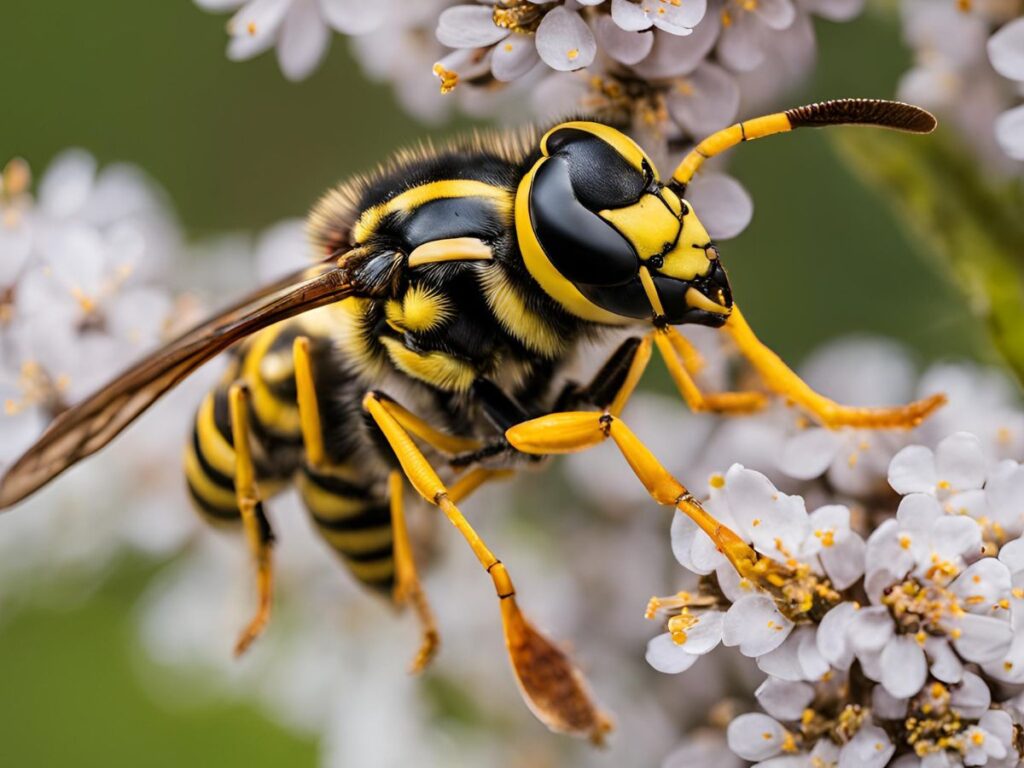
Keeping the area around your house and garden secure and comfortable requires preventing a wasp invasion. The possibility that wasps may establish nests and become an annoyance can be considerably decreased by taking preventative action. Here are some practical prevention tips to keep wasps at bay.
Wasp-Proof Your Home and Garden:
- Regularly Check for Nests: One of the most effective ways to prevent a wasp infestation is to monitor your property for new nests. Watch potential nesting sites, such as attics, eaves, trees, and sheds, during warmer months. Check these areas regularly for signs of wasp activity or the early stages of nest-building. If you spot a nest early, removing it before it grows and attracts more wasps is much easier.
- Keep the Exterior Clean: Wasps are attracted to food sources and sugary substances, so keeping your home and garden clean is crucial. Remove any fallen fruit, spilled drinks, or food scraps, especially near outdoor dining areas. Regularly dispose of trash and compost, and ensure that garbage cans have tight-fitting lids. Eliminating these food sources makes your space less attractive to wasps.
Keep Food and Drinks Covered:
- In the Garden: When enjoying outdoor activities like picnics, how do you get rid of wasps BBQs, or gardening, sugary drinks and food can attract wasps. Always keep food and beverages covered when not in use to minimize this risk. Consider using mesh food covers or placing drinks in sealed containers. After meals, promptly clean up any food or drink spills to prevent drawing wasps into your outdoor space.
Wasp Repellents:
- Use Natural Deterrents: Wasps can be deterred using natural essential oils. Scents such as peppermint oil, eucalyptus oil, and citronella are known to repel wasps. You can create a homemade wasp repellent by In a spray bottle, combine a few drops of these oils with water, then apply the mixture to areas where wasps tend to gather or potential nesting spots. Not only does this keep wasps away, but it also leaves a pleasant fragrance.
- Commercial Wasp Sprays: Consider using commercial wasp-repellent sprays for a stronger deterrent for a stronger deterrent. These sprays are formulated to keep wasps at bay, especially around the perimeter of your home or garden. They can be instrumental during the nesting season to stop wasps from settling in certain areas.
By implementing these prevention tips—regular checks for nests, keeping your surroundings clean, covering food, and using repellents—you can significantly reduce the risk of future wasp infestations. Being proactive and maintaining a wasp-free environment will help you enjoy your home and garden without the threat of these pests.
Conclusion
Dealing with wasps in your home and garden calls for a mix of preventative actions, prompt intervention, and safety precautions. By identifying wasp nests early, using DIY solutions or professional help when necessary, and implementing preventive strategies like keeping your environment clean and using natural repellents, you can effectively manage and prevent wasp infestations.
Acting quickly and responsibly when you notice signs of wasp activity is essential. Don’t wait until the problem escalates, as this can lead to more significant risks and damages. If the infestation is large or in a hard-to-reach area, it’s always best to consult a professional exterminator to ensure safe and effective removal. Taking these steps will help maintain a wasp-free and safer environment for you and your family.
FAQs
1. What attracts wasps to my home and garden?
Sugary foods and beverages draw wasps, protein sources, and sheltered nest areas. Food scraps, fallen fruit, open garbage cans, and sweet drinks can draw wasps to your property.
2. How can I prevent wasps from building nests around my home?
Keep an eye out for early nest signals in your garden and house. Close up holes and crevices near vents, doors, and windows. Keep food and drinks covered and maintain cleanliness to eliminate attractants. Using natural repellents like peppermint oil can also help deter wasps.
3. What should I do if I find a wasp nest?
If the nest is small and easily accessible, remove it using wasp spray or a homemade solution. Always wear protective clothing and attempt removal when wasps are less active at night. For more enormous nests or those in hard-to-reach areas, it’s best to call a professional exterminator.
4. Are there natural ways to repel wasps?
Natural repellents like essential oils (peppermint, eucalyptus, citronella) can be effective. Planting wasp-repelling plants such as eucalyptus and citronella can also help.

